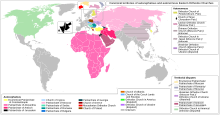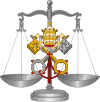
The Russian Orthodox Diocese of Sourozh is a diocese of the Russian Orthodox Church (ROC), covering the islands of Great Britain and Ireland. Since 28 December 2018, the Diocese of Sourozh is part of the Patriarchal Exarchate in Western Europe.

Patriarch Filaret is a Ukrainian religious leader, currently serving as the primate and Patriarch of the unrecognized Ukrainian Orthodox Church – Kyiv Patriarchate. The Orthodox Church of Ukraine, that he left in 2019, views him as the Honorary Patriarch emeritus, while the Ecumenical Patriarchate of Constantinople recognises him as former Metropolitan of Kyiv. He was formerly the Metropolitan of Kiev and the Exarch of Ukraine in the Patriarchate of Moscow (1966–1992). After joining the Kyiv Patriarchate, he was defrocked and in 1997 excommunicated by the ROC.

The Russian Orthodox Church Outside of Russia, also called Russian Orthodox Church Outside Russia or ROCOR, or Russian Orthodox Church Abroad (ROCA), is a semi-autonomous part of the Russian Orthodox Church. Currently, the position of First-Hierarch of the ROCOR is occupied by Metropolitan Nicholas (Olhovsky).

The Ukrainian Orthodox Church (UOC), commonly referred to by the exonym Ukrainian Orthodox Church of the Moscow Patriarchate (UOC-MP), is an Eastern Orthodox church in Ukraine.
The Catacomb Church as a collective name labels those representatives of the Russian Orthodox clergy, laity, communities, monasteries, brotherhoods, etc., who for various reasons, have moved to an illegal position since the 1920s. In a narrow sense, the term "catacomb church" means not just illegal communities, but communities that rejected subordination to the Acting patriarchal locum tenens Metropolitan Sergius (Stragorodsky) after 1927, and adopted anti-Soviet positions. During the Cold War the ROCOR popularized the term in the latter sense, first within the Russian diaspora, and then in the USSR by sending illegal literature there. The expression "True Orthodox church" is synonym for this latter, narrower sense of "catacomb church".

November 29 - Eastern Orthodox liturgical calendar - December 1

The Estonian Orthodox Church of the Moscow Patriarchate is a semi-autonomous church in the canonical jurisdiction of the Patriarchate of Moscow whose primate is appointed by the Holy Synod of the latter.

November 5 - Eastern Orthodox liturgical calendar - November 7

December 26 - Eastern Orthodox liturgical calendar - December 28

December 29 - Eastern Orthodox liturgical calendar - December 31
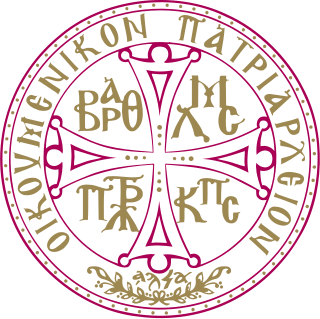
A schism between the Russian Orthodox Church and the Ecumenical Patriarchate of Constantinople began on 15 October 2018 when the former unilaterally severed full communion with the latter.

In 1996 a schism between Moscow and Constantinople occurred; this schism began on 23 February 1996, when the Russian Orthodox Church severed full communion with the Ecumenical Patriarchate of Constantinople, and ended on 16 May 1996 when the Russian Orthodox Church and the Ecumenical Patriarchate reached an agreement.

The Diocese of the Philippines and Vietnam is a diocese of the Patriarchate of Moscow created on 26 February 2019, directly under the Patriarchal Exarchate in Southeast Asia (PESEA).

On 5 January 2019, Bartholomew I, the Ecumenical Patriarch of Constantinople, signed the tomos that officially recognized and established the Orthodox Church of Ukraine and granted it autocephaly (self-governorship). The events immediately leading to the grant of autocephaly were:
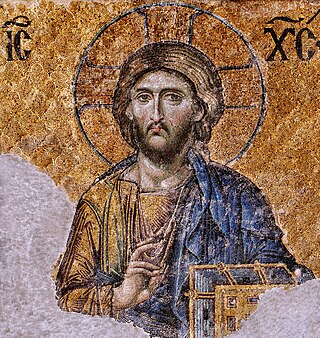
On 15 October 2018, the Russian Orthodox Church broke the communion with the Ecumenical Patriarchate because of a dispute concerning the canonical jurisdiction over Ukraine. This led to the 2018 Moscow–Constantinople schism. Numerous Orthodox churches took position concerning the dispute over the canonical jurisdiction over Ukraine, whether before or after this schism.
The Patriarchal Exarchate in Western Europe is an exarchate created by the Russian Orthodox Church (ROC) on 28 December 2018.

The Spanish-Portuguese diocese (SPD) or Diocese of Madrid and Lisbon is a diocese of the Russian Orthodox Church (ROC) created on 28 December 2018. The diocese is part of the Patriarchal Exarchate in Western Europe.
The Patriarchal Exarchate in South-East Asia is an exarchate created by the Russian Orthodox Church (ROC) on 28 December 2018.
The Diocese of Thailand is a diocese of the Russian Orthodox Church which covers the territory Thailand, Cambodia, Laos, and Myanmar. It is part of the Patriarchal Exarchate in South-East Asia.
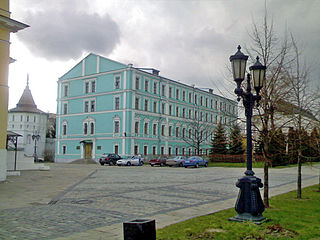
The Department for External Church Relations of the Moscow Patriarchate (DECR) is one of the synodal institutions of the Russian Orthodox Church. It was established on 4 April 1946.
